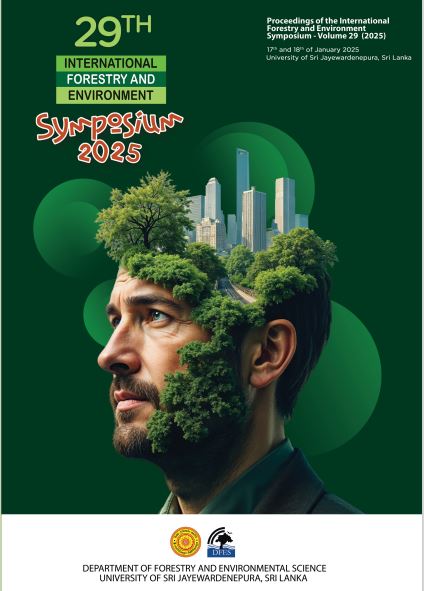Economic and Environmental Sustainability of Oyster Mushroom (Pleurotus ostreatus) Cultivation using Agro-Industrial Waste Substrates
DOI:
https://doi.org/10.31357/fesympo.v29.8092Abstract
The increasing global demand for sustainable agricultural practices has led to a growing interest in oyster mushroom cultivation using agro-industrial waste substrates. These substrates, such as mango sawdust and coir dust, provide a low-cost cultivation medium while addressing the issue of agricultural waste disposal. This study evaluates the economic and environmental sustainability of using these waste materials for oyster mushroom (Pleurotus ostreatus) cultivation. The objectives include assessing the effects of different mango sawdust and coir dust ratios on mushroom yield and growth, analyzing the economic feasibility based on production costs and benefit-cost ratios, and exploring how the use of these waste substrates can reduce reliance on non-renewable materials and minimize waste. The experiment involved five treatments with varying ratios of mango sawdust and coir dust: T1 (100% mango sawdust, control), T2 (75% mango sawdust, 25% coir dust), T3 (50% mango sawdust, 50% coir dust), T4 (25% mango sawdust, 75% coir dust), and T5 (100% coir dust). Key measurements included mycelium growth time, primordia initiation, substrate weight loss, mushroom yield (cap diameter, fresh weight, dry weight), and benefit-cost ratios. Environmental benefits were evaluated through waste reduction. Data were analyzed using ANOVA to determine significant differences between treatments. The results revealed significant differences across the treatments, with T3 (50:50 mix of mango sawdust and coir dust) showing the most favorable outcomes. T3 exhibited the shortest mycelium growth and primordia initiation times, the highest substrate and fresh weights, and the best cost-benefit ratio, making it the most economically viable option. T2 and T3 also produced the largest cap diameters and highest dry weights. In contrast, T5 (100% coir dust) showed less favorable results for most parameters. The findings highlight that a balanced combination of mango sawdust and coir dust not only optimizes mushroom yield but also enhances economic returns and environmental sustainability. Reusing agro-industrial waste materials reduces production costs and environmental pollution, while promoting sustainable agricultural practices. The study demonstrates the potential of oyster mushroom cultivation using waste substrates as an economically and environmentally sustainable solution. Further research is encouraged to optimize substrate mixtures for different mushroom species and explore other agro-industrial waste materials for broader application.
Keywords: Agro-industrial waste, Economic and environmental impact, Oyster mushroom, Sustainability



